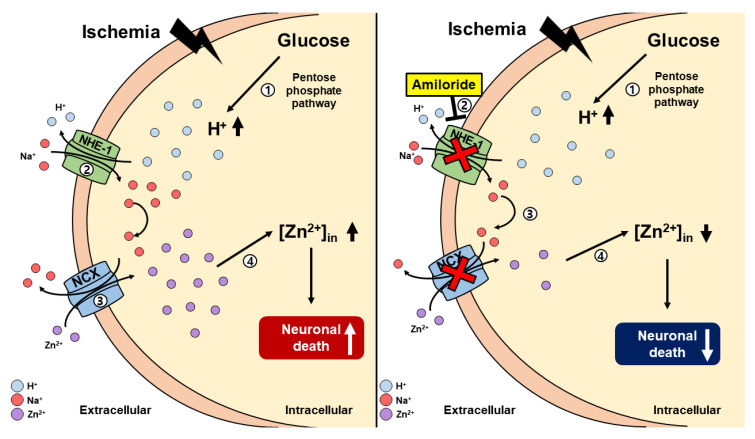Figure 7.
This schematic illustration shows amiloride action via inhibition and downregulation of the sodium–hydrogen exchanger-1 (NHE-1) channel. (A) [1] Global cerebral ischemia insult results in increasing levels of intracellular hydrogen. [2] Hydrogen ions are moved to the extracellular space via NHE-1. Sodium ions are moved to the intracellular space via NHE-1. [3] When sodium is overloaded in the intracellular space, it is released into the extracellular space through the sodium–calcium exchanger (NCX). Extracellular zinc enters the cell through NCX. [4] Intracellular zinc accumulation occurs, leading to neuronal death. (B) However, [1] after global cerebral ischemia, [2] amiloride administration inhibits intracellular sodium accumulation via the NHE-1 channel. [3] Sodium does not enter the intracellular space and becomes NCX inactivated. [4] Because of this agent’s mechanism, zinc accumulation is reduced, resulting in reduced neuronal death after global cerebral ischemic insult.

